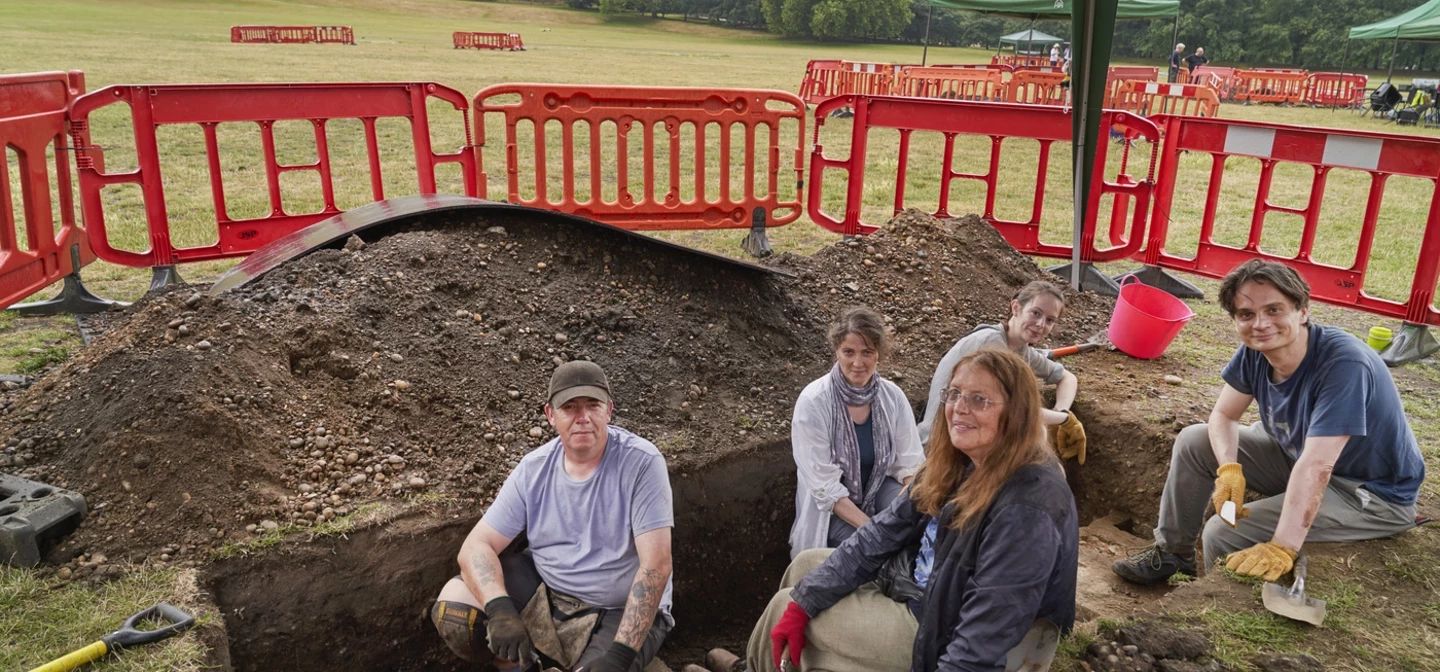
Community Archaeology
Greenwich Park is perhaps the most historic of all the Royal Parks with a history that dates back to Roman times.
Revisiting the Keeper’s Cottage with a second community dig
It is the site of two scheduled ancient monuments; the Roman Temple and Anglo-Saxon Cemetery and is part of the Greenwich Maritime World Heritage Site.
A brief history of Greenwich Park’s Old Keeper’s Cottage
The Old Keepers Cottage, or Lodge, stood close to Queen Elizabeth's Oak, near the centre of the Park and was demolished in 1853. From a map of the Park dated 1695, a building similar to that demolished in 1853 is illustrated, surrounded by an orchard. Both the old oak and the pump (existing horse trough) were within the oaken garden fence.
In 2010 The Royal Parks ran a very successful community archaeology project for one week. This identified the potential for further fieldwork.
Then, in 2014, a community archaeology project uncovered the site of the Old Keeper’s Cottage close to the Queen Elizabeth’s Oak, near the centre of Greenwich Park. The cottage was demolished in 1853.
Fast-forward to 2022 and The Royal Parks’ community archaeologist returned to the site with groups of volunteers and school children – including the North Downs Young Archaeologists - with the aim to find out more about the foundations, or ‘footings’ of the other outbuildings at the site. The foundations are just below the surface and had been confirmed by running geophysical surveys which measure the electrical conductivity of the ground, creating an image of what’s below the surface.
During the first week of the two-week dig, the team found three of the four buildings we hoped to find and recovered lots of evidence for occupation and activity around the buildings. Dating evidence from the main trench suggests that at least one of the buildings was pulled down in the 1920's. The pottery from the site suggests that the site has been occupied for at least three or four hundred years.
During the second week, with the help of two year 4 classes from Haimo primary and an archaeology club from Herongate primary, we found the fourth building and learned more about when the buildings were constructed - probably in the late 1600s or early 1700s. One of our History Research Group volunteers also brought some postcards to the site that showed that everything had been demolished by the early 20th century, a decade early than we thought.
Finds were cleaned and documented and the ground backfilled, returning the site of the dig to grassland.